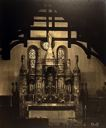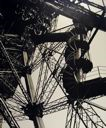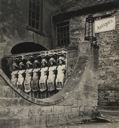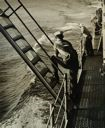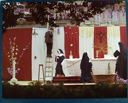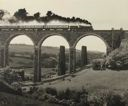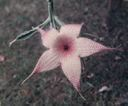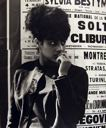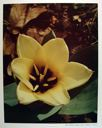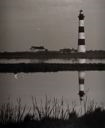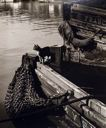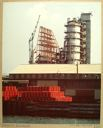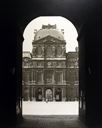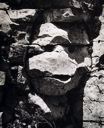Ed Willis Barnett
American
(Birmingham, Alabama, 1899 - 1987, Birmingham, Alabama)
Ed Willis Barnett was born in Birmingham, Alabama, on May 8, 1899. He grew up in Birmingham, and received his first camera, a Kodak 3-A, when he was a boy of twelve, working in the family dining room to develop his prints by gaslight. Dissatisfied with commercial printing of his negatives, he mostly abandoned photography until his later adult life.
Barnett attended the University of Alabama from 1915 to 1917, and the United States Naval Academy from 1917 to 1920, serving in the Navy during World War I. He made his first trip to Europe in 1922, returning in 1924 and 1925, and at that time meeting many of the important figures in the modernist movements of art and design through his connection to Gertrude Stein and her circle. Primary among these figures was Man Ray, whose techniques of manipulating negatives had an ongoing influence on Barnett's photography. While in Paris, Barnett also trained as a competitive fencer, and went on to represent the United States as a member of the fencing team for the 1928 Olympics. In 1929, the Great Depression prompted Barnett's return to Birmingham, where he founded an advertsing agency with his wife. He worked in the business of advertising, with a breatk between 1941 and 1945 for wartime Naval service, until the early 1950s when he again resumed making photographs. His advertsing firm, Barnett and Barnett, was in business between 1929 and 1967, but he built his first darkroom to develop his own prints in 1952. He became a member of the Photographic Society of America in 1954.
Although he was largely self-taught, Barnett gained a greater appreciation for the skills of darkroom developing by emulating the techinques of Man Ray (solarization for example) and, in the 1960s, working directly with Otto Litzel in Newark, New Jersey, and Adolf Fassbender in New York. He also worked with Arthur Underwood in Rochester, New York. While he photographed a wide variety of subjects, many of his most successful images were made in Europe, and he was particularly successful photographing European architecture. He died November, 28, 1987 in Birmingham.
(Biographical information from the Artist's Vertical File, MMFA)
American
(Birmingham, Alabama, 1899 - 1987, Birmingham, Alabama)
Ed Willis Barnett was born in Birmingham, Alabama, on May 8, 1899. He grew up in Birmingham, and received his first camera, a Kodak 3-A, when he was a boy of twelve, working in the family dining room to develop his prints by gaslight. Dissatisfied with commercial printing of his negatives, he mostly abandoned photography until his later adult life.
Barnett attended the University of Alabama from 1915 to 1917, and the United States Naval Academy from 1917 to 1920, serving in the Navy during World War I. He made his first trip to Europe in 1922, returning in 1924 and 1925, and at that time meeting many of the important figures in the modernist movements of art and design through his connection to Gertrude Stein and her circle. Primary among these figures was Man Ray, whose techniques of manipulating negatives had an ongoing influence on Barnett's photography. While in Paris, Barnett also trained as a competitive fencer, and went on to represent the United States as a member of the fencing team for the 1928 Olympics. In 1929, the Great Depression prompted Barnett's return to Birmingham, where he founded an advertsing agency with his wife. He worked in the business of advertising, with a breatk between 1941 and 1945 for wartime Naval service, until the early 1950s when he again resumed making photographs. His advertsing firm, Barnett and Barnett, was in business between 1929 and 1967, but he built his first darkroom to develop his own prints in 1952. He became a member of the Photographic Society of America in 1954.
Although he was largely self-taught, Barnett gained a greater appreciation for the skills of darkroom developing by emulating the techinques of Man Ray (solarization for example) and, in the 1960s, working directly with Otto Litzel in Newark, New Jersey, and Adolf Fassbender in New York. He also worked with Arthur Underwood in Rochester, New York. While he photographed a wide variety of subjects, many of his most successful images were made in Europe, and he was particularly successful photographing European architecture. He died November, 28, 1987 in Birmingham.
(Biographical information from the Artist's Vertical File, MMFA)
Artist Objects
